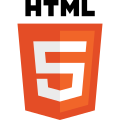
"Want to build a website? You better know HTML first!"
Let’s Get to Know HTML
If you’ve ever heard someone talk about building websites, chances are you’ve come across the word HTML. Whether from a YouTube tutorial or a blog post, HTML is usually your first stop into the world of web development.
But really—what is HTML? Why is it important? How does it work?
Relax. We’re going to explore all that in this article, in a chill and easy-to-understand way. Grab some coffee or tea, and let’s dive in!
What is HTML?
HTML stands for HyperText Markup Language. Let’s break that down:
- HyperText: Text that can link to other content (like hyperlinks).
- Markup: Tags that tell the browser how to display content.
- Language: A way of writing rules for the browser to understand.
In short: HTML is the language used to structure web pages and content, like headings, paragraphs, images, links, tables, and more.
HTML is the Foundation of the Web
Think of building a website like building a house. HTML is the framework and foundation. Then comes CSS for decoration (paint, furniture), and JavaScript for interactivity (like automatic lights or popups).
Even modern drag-and-drop website builders still generate HTML in the background!
A Quick History of HTML
HTML was created by Tim Berners-Lee in the early 1990s along with the World Wide Web. At first, it was just for plain text and links.
Now? HTML has evolved a lot. The latest version is HTML5, which can:
- Play audio/video without plugins
- Draw graphics using <canvas>
- Create interactive forms
- Support games and animations
Basic HTML Structure
<!DOCTYPE html>
<html>
<head>
<title>Hello World!</title>
</head>
<body>
<h1>Welcome to My Website</h1>
<p>This is my first paragraph. Exciting!</p>
</body>
</html>
This is a basic HTML page with:
<!DOCTYPE html>– tells the browser we’re using HTML5<html>– the root element of the page<head>– holds info like the page title<body>– contains everything the user sees
Common HTML Elements
HTML is made up of elements. Most have an opening and closing tag:
<p>This is a paragraph.</p>Some are self-closing:
<img src="image.jpg" alt="an image">
<br>Common HTML tags:
<h1> to <h6>– Headings<p>– Paragraph<a href="">– Link<img>– Image<ul>, <ol>, <li>– Lists<table>– Table<form>– Form
Is HTML a Programming Language?
Nope. It’s a markup language, not a programming language. That means it describes content and layout, but doesn’t have logic like loops or conditions.
Think of HTML like: “This is a heading,” “This is a picture,” “This is a paragraph.”
JavaScript is the one doing actions like: “If button clicked, show a message.”
How to Try HTML?
- Open any text editor (Notepad, VS Code, etc.)
- Write your HTML code
- Save it as
index.html - Double-click it to open in your browser
Voila! Your first webpage!
HTML + CSS + JavaScript = Modern Web
HTML is the structure. If you want styling, use CSS. If you want interactivity, use JavaScript.
Example:
<h1 style="color:blue;">Hello World!</h1>
<button onclick="alert('Hi there!')">Click Me</button>
Common HTML Mistakes
- Forgetting to close tags
- Incorrect nesting (e.g.,
<b><i>Text</b></i>) - Jumping to JavaScript without HTML basics
- Relying too much on drag-and-drop builders
HTML Is Essential
Whether you want to become a web developer or just build a personal website, learning HTML is the first step.
It’s simple, powerful, and the foundation of every website on the internet—yes, even giants like Google or Facebook use HTML under the hood.
So start now. Open a text editor. Build your first page. It all begins here.

0 Comments:
Posting Komentar